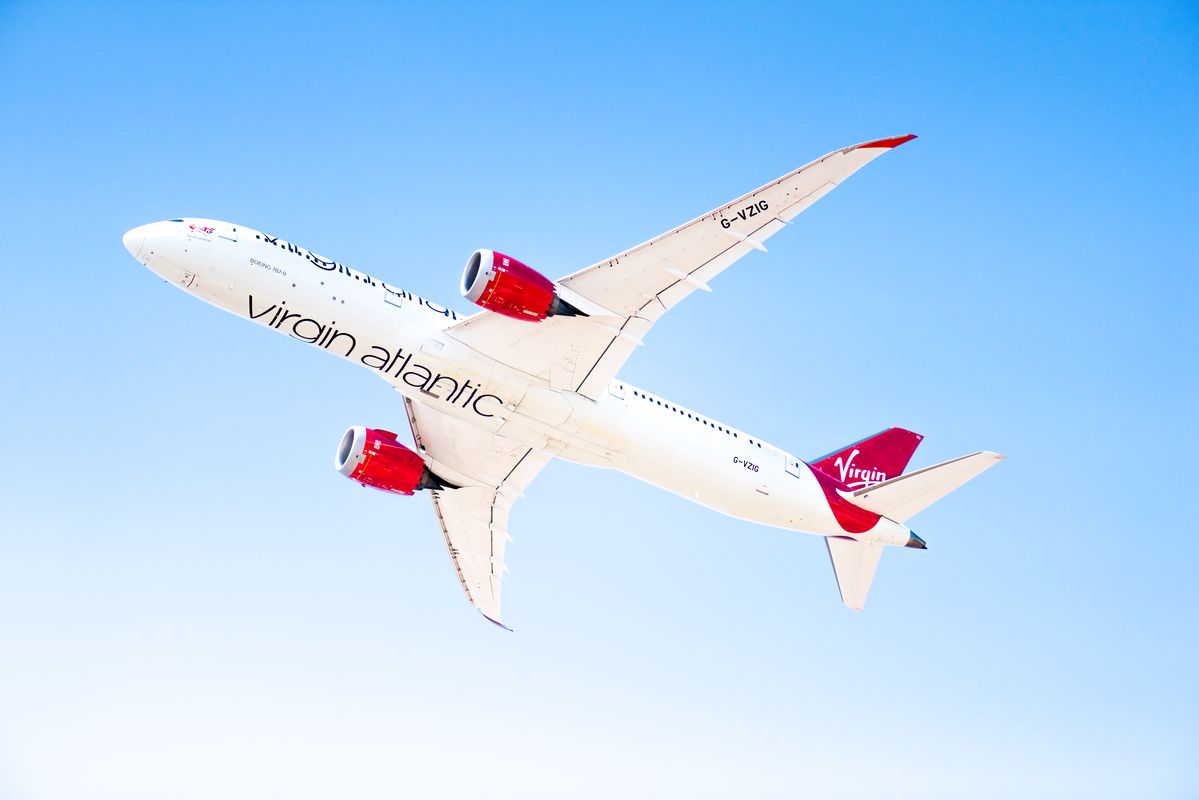On Tuesday, Virgin Atlantic flew a large passenger jet from London to New York using 100% “Sustainable Aviation Fuel” (SAF). The flight was meant to show that it’s possible to fly using cleaner fuels, but experts disagree about the effects of SAF on the climate.
Airplane travel creates nearly 3% of the world’s greenhouse gases. That makes cutting pollution from flying an important part of the fight against the climate crisis. Airlines and plane makers are working hard to figure out ways to make their flights pollute less.
Tuesday’s flight was supposed to draw attention to these efforts. The Boeing 787 can carry hundreds of passengers. But for the test flight, the plane only held people from the companies involved, and some reporters. Still, the plane crossed the Atlantic Ocean with its engines powered by 100% sustainable fuel.

(Source: Virgin Atlantic.)
That’s a big deal. Normally, airplanes can use up to 50% SAF, and this is mixed with the kerosene that the planes usually use for fuel. Virgin Atlantic had to get special permission to use 100% SAF.
The fuel used on the flight was mainly made from used cooking oils and animal fats. A small part of the fuel was made from corn waste. Virgin Atlantic says that using SAF cut the flight’s pollution by 70%. SAF still pollutes when it’s burned, just like regular jet fuel. The difference is in how the fuels are made.
SAF is made from plants (and related animal products) that once absorbed carbon dioxide (CO2) from the air. When SAF burns, it just releases this same CO2 again. That’s different from jet fuel, which is made from oil pumped from underground, releasing CO2 that was deeply buried.

(Source: Virgin Atlantic.)
SAF may sound great, but it still has many problems. For one thing, SAF costs as much as five times as much as regular jet fuel. That helps explain why only one-tenth of 1% of the fuel airlines currently use is SAF. (That’s just one gallon – or liter – out of every thousand.)
Virgin Atlantic is hoping that its flight will encourage more companies to produce SAF and that this will bring the price down.
But even if the price of SAF drops, critics say there are still big problems with it. They say it’s easy to make small amounts of SAF out of plant waste. But to make as much SAF as the airlines really need would require farmers to grow plants for fuel instead of for eating. This could also lead to more forests being cut down for farmland.

(Source: Virgin Atlantic.)
Airlines like SAF because it can be used now in existing planes with no changes. They hope it will help quickly reduce airplane pollution until non-polluting fuels are developed.
Governments seem to agree that SAF is a step in the right direction. Both the United States and the European Union have set targets that will sharply increase the use of SAF in coming years. But airline companies have a long way to go to reach their goal of becoming carbon neutral by 2050.
Did You Know…?
Virgin Atlantic wasn’t the only company to use SAF to fly across the Atlantic recently. On November 19, Gulfstream, a company that makes airplanes, used SAF to power the engines of its small business jet, the Gulfstream G600, as it flew from the US to England.
